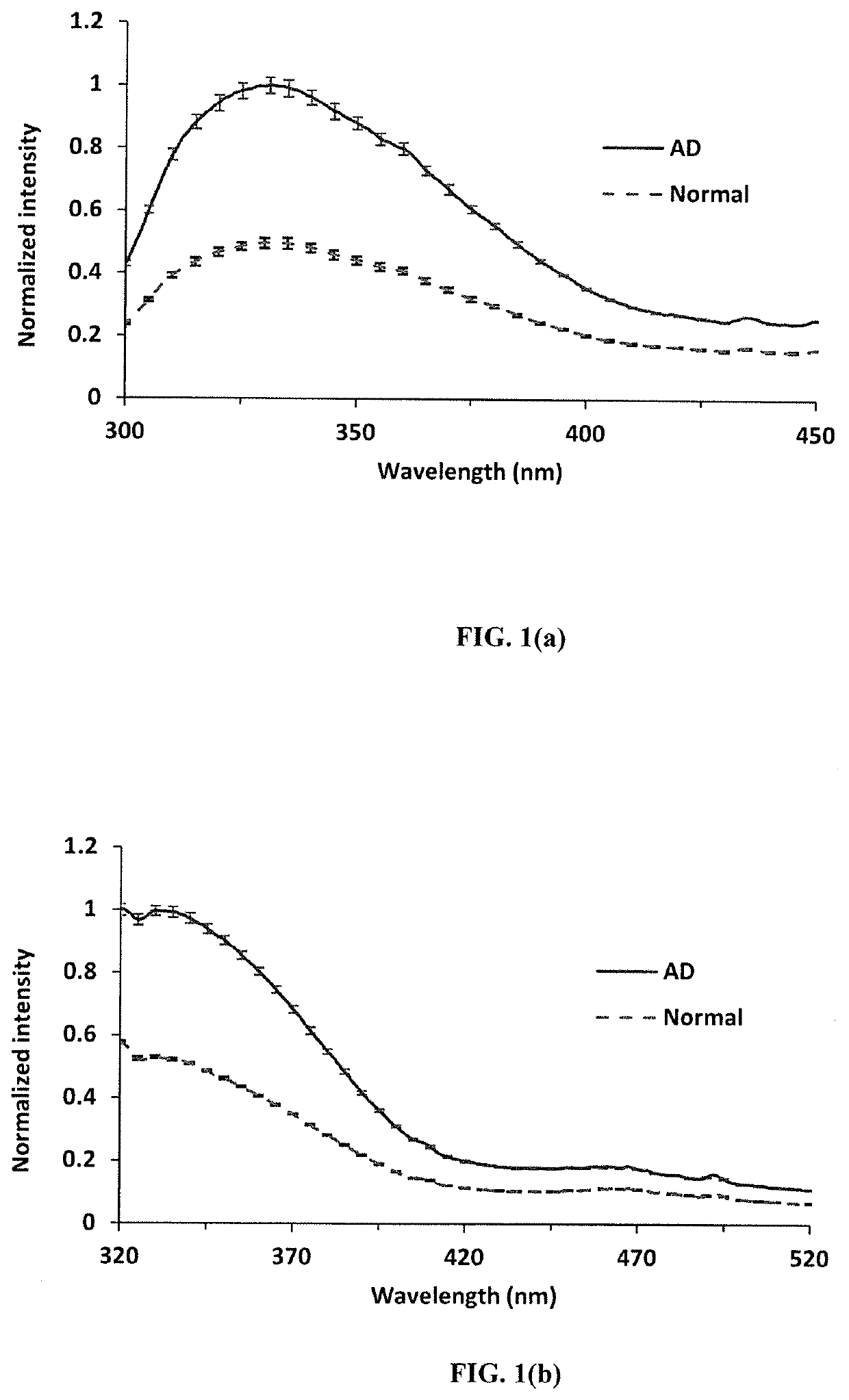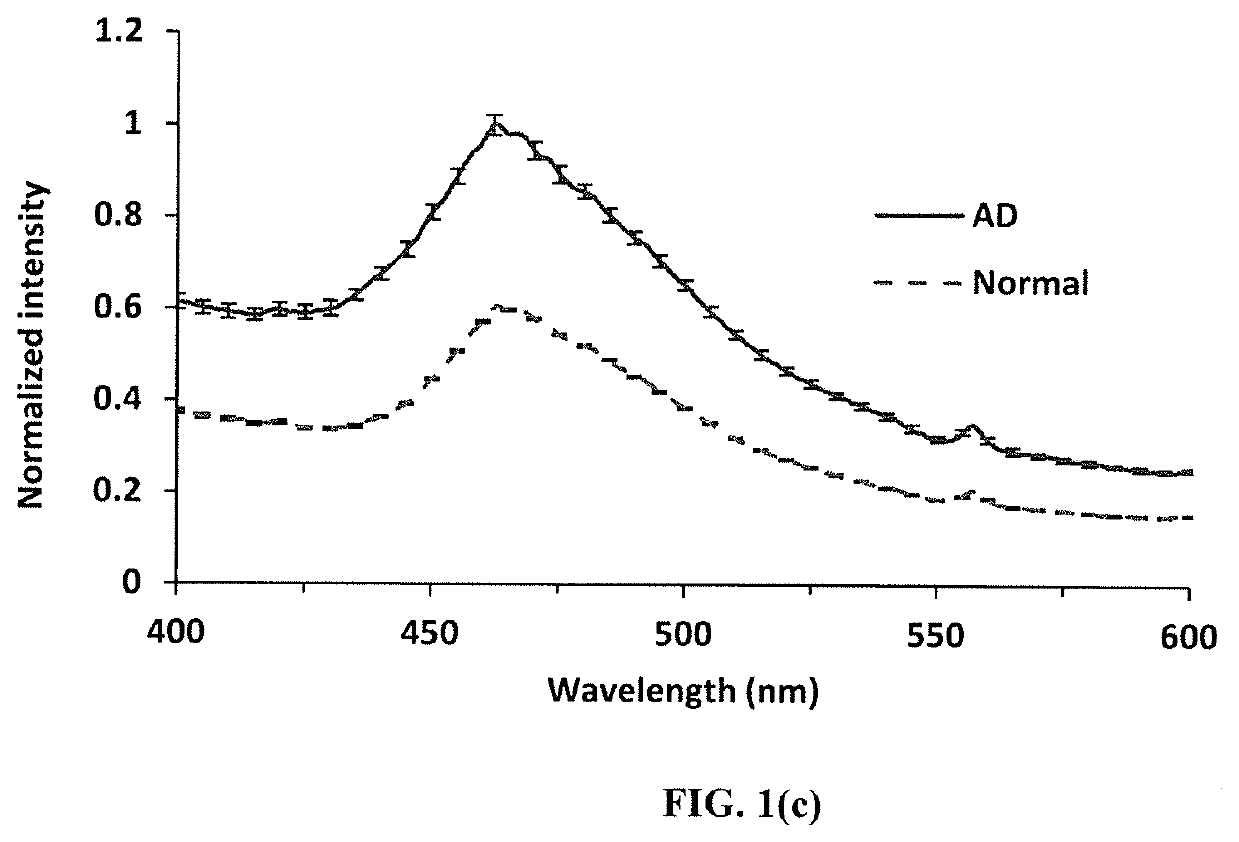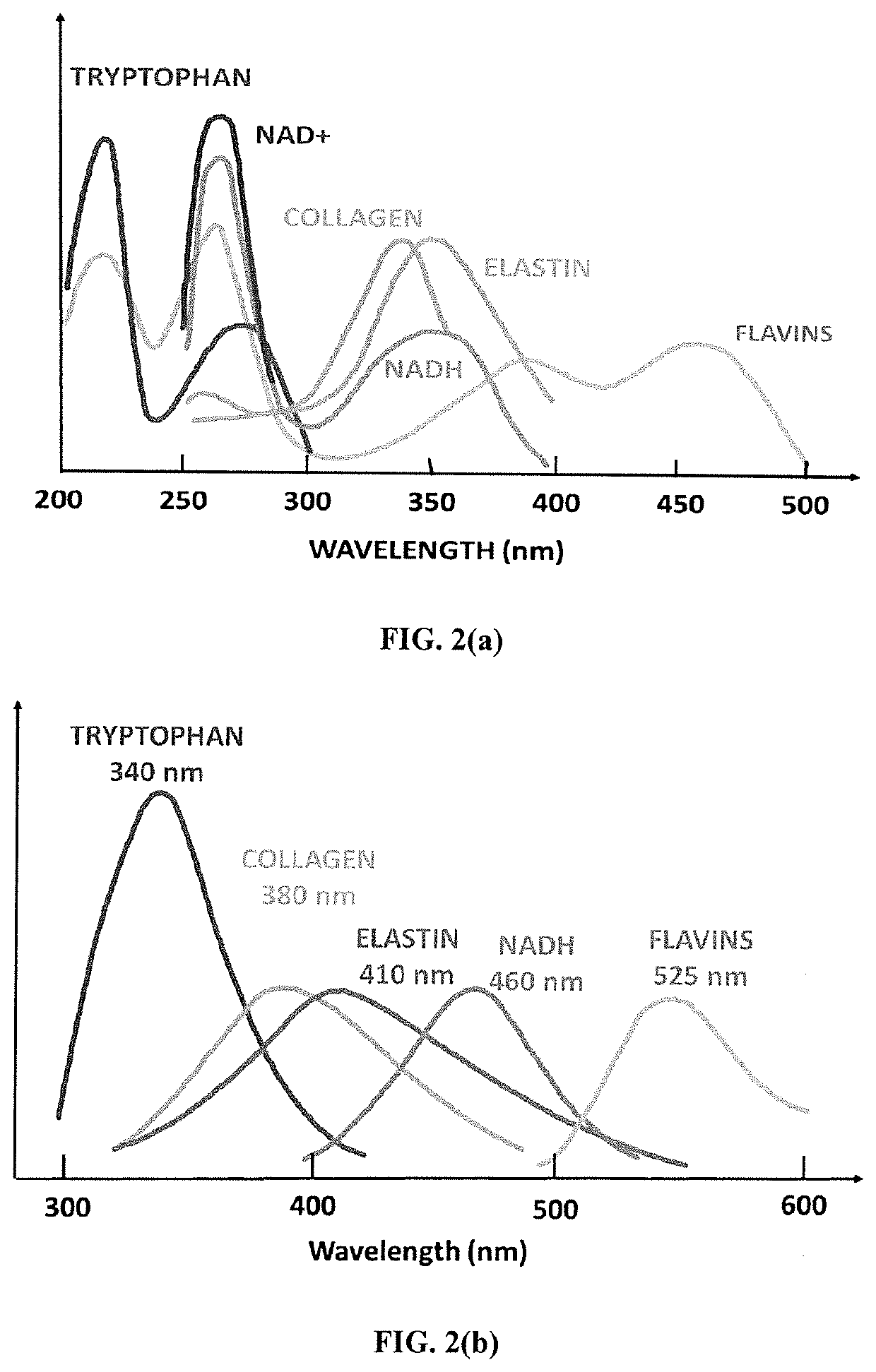Label-Free Single and Multi-Photon Fluorescence Spectroscopy to Detect Brain Disorders and Diseases: Alzheimer, Parkinson, and Autism From Brain Tissue, Cells, Spinal Fluid, and Body Fluids
a fluorescence spectroscopy and label-free technology, applied in the field of diagnostic testing of brain disorders and diseases, can solve the problems of still no cure or understanding of molecular mechanisms, and achieve the effects of less time consumption, no tissue removal, and minimal invasiveness
- Summary
- Abstract
- Description
- Claims
- Application Information
AI Technical Summary
Benefits of technology
Problems solved by technology
Method used
Image
Examples
Embodiment Construction
[0019]FIG. 1 displays the result of fluorescence spectral profiles in AD and N brain samples at excitation wavelengths 266 nm (FIG. 1a), 300 nm (FIGS. 1b), and 340 nm (FIG. 1c). Different excitation wavelengths were employed to determine the emission spectra of each biomolecule (tryptophan, NADH, and FAD), as shown in FIG. 2. Table 1 summarizes the emission wavelengths for assigned molecules at peak emissions in AD and N fresh brain tissues under different excitation wavelengths.
[0020]FIG. 1(a) shows that at excitation wavelength of 266 nm the fluorescence peaks of AD and N brain tissues are at the same wavelength (˜330 nm), corresponding to the wavelength of emission peaks of tryptophan (FIG. 2).[17] Significant difference of peaks of tryptophan was observed between AD and N brain (P=0.001). A weak secondary peak ranging from 430 to 460 nm is due to NADH, which may be caused by fluorescent resonance energy transfer from excited tryptophan to NADH and second singlet excitation from ...
PUM
| Property | Measurement | Unit |
|---|---|---|
| wavelengths | aaaaa | aaaaa |
| wavelengths | aaaaa | aaaaa |
| exposure wavelengths | aaaaa | aaaaa |
Abstract
Description
Claims
Application Information
 Login to View More
Login to View More - R&D
- Intellectual Property
- Life Sciences
- Materials
- Tech Scout
- Unparalleled Data Quality
- Higher Quality Content
- 60% Fewer Hallucinations
Browse by: Latest US Patents, China's latest patents, Technical Efficacy Thesaurus, Application Domain, Technology Topic, Popular Technical Reports.
© 2025 PatSnap. All rights reserved.Legal|Privacy policy|Modern Slavery Act Transparency Statement|Sitemap|About US| Contact US: help@patsnap.com



